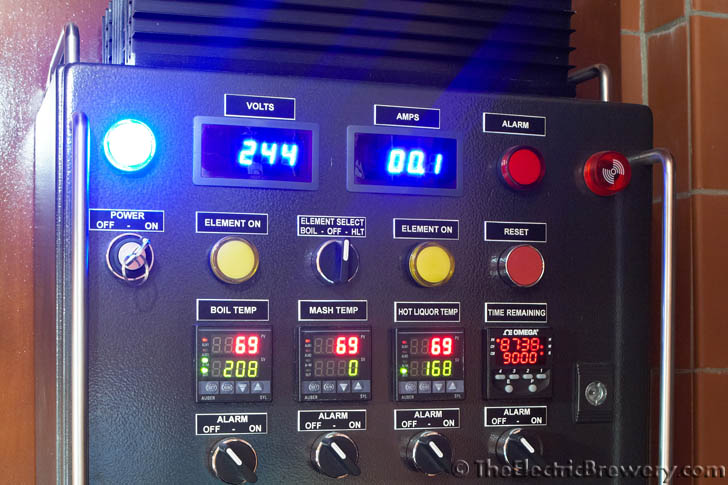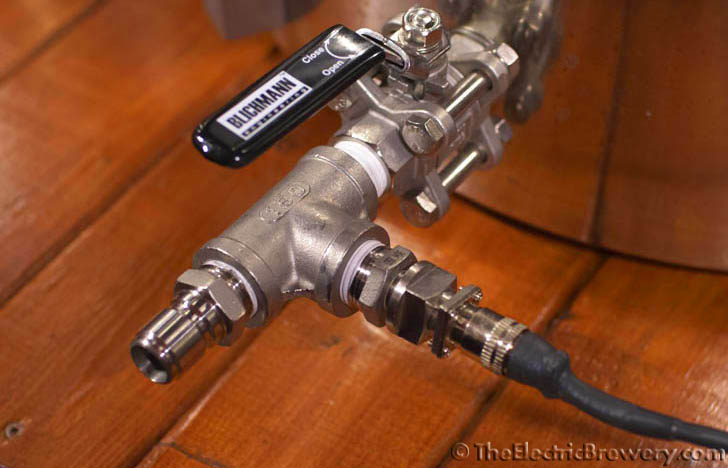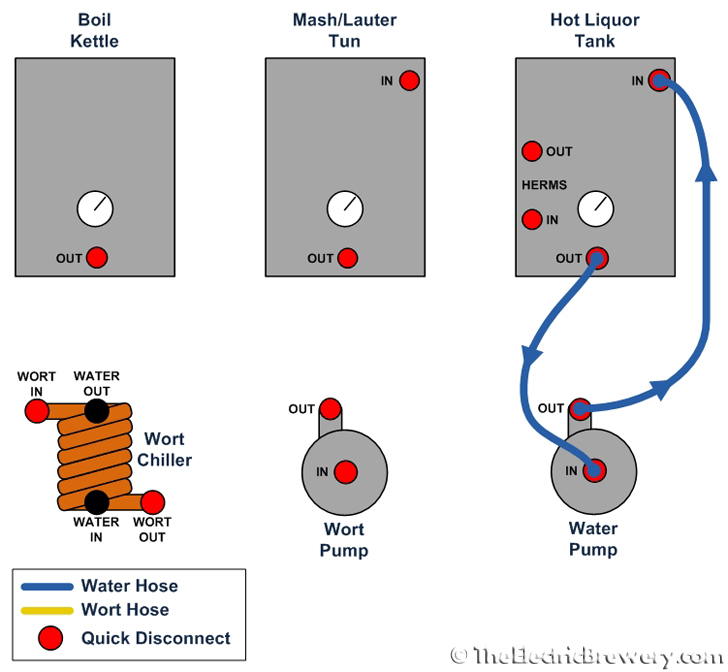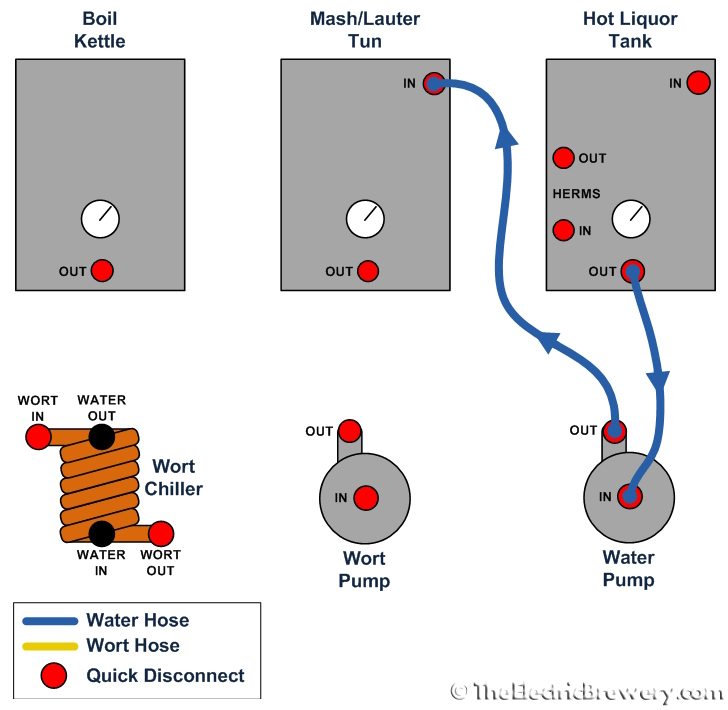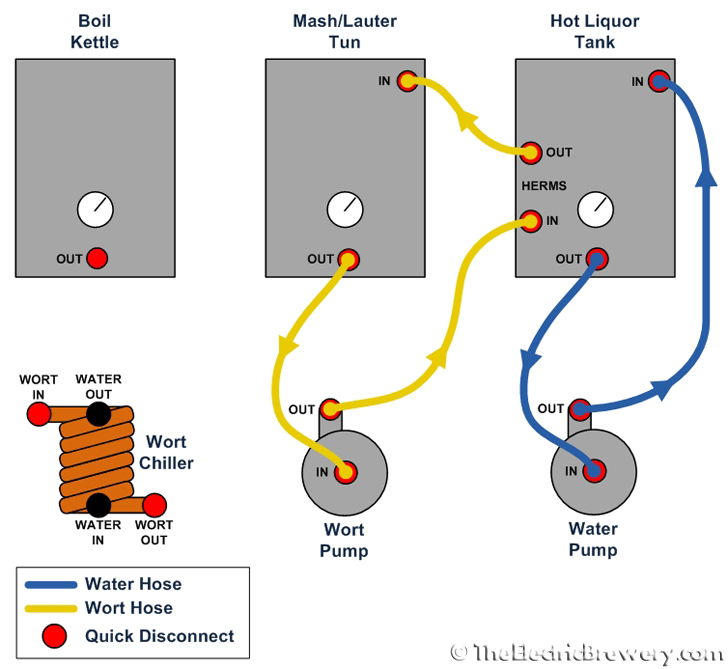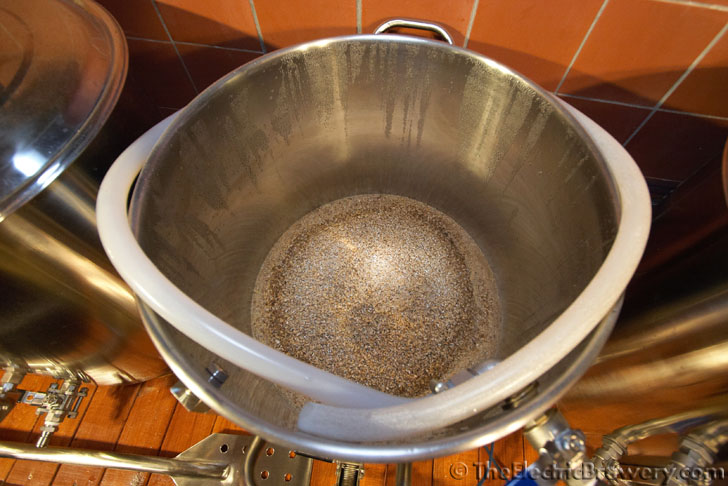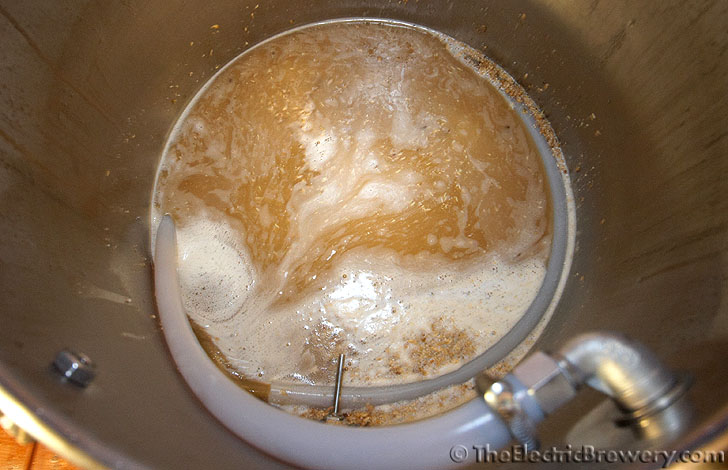SpentBrains
Well-Known Member
- Joined
- Jan 4, 2016
- Messages
- 151
- Reaction score
- 37
After looking at a lot of panels, I see many are equipped with a 3rd PID simply for the sake of being able to measure the mash temp.
I must not be understanding something correctly because I don't understand the point of a MT PID that doesn't drive an element.
Does anyone employ or see a problem with a rotary selector that can choose from as many temp probes as the builder would like to feed input to the HLT PID instead of a 3rd PID?
I'm thinking 3 total temp probes. One in the HLT, one at the HERMS coil return to the MT and one at the bottom of the MT so that temp drop through the mash could be calculated. Any of the 3 could be used as target data for the HLT's heater, but convention would be that while heating strike and or mashout water the brewer would select the HLT probe and while recirculating, the brewer would typically select the HERMs coil return to MT probe.
I must not be understanding something correctly because I don't understand the point of a MT PID that doesn't drive an element.
Does anyone employ or see a problem with a rotary selector that can choose from as many temp probes as the builder would like to feed input to the HLT PID instead of a 3rd PID?
I'm thinking 3 total temp probes. One in the HLT, one at the HERMS coil return to the MT and one at the bottom of the MT so that temp drop through the mash could be calculated. Any of the 3 could be used as target data for the HLT's heater, but convention would be that while heating strike and or mashout water the brewer would select the HLT probe and while recirculating, the brewer would typically select the HERMs coil return to MT probe.


